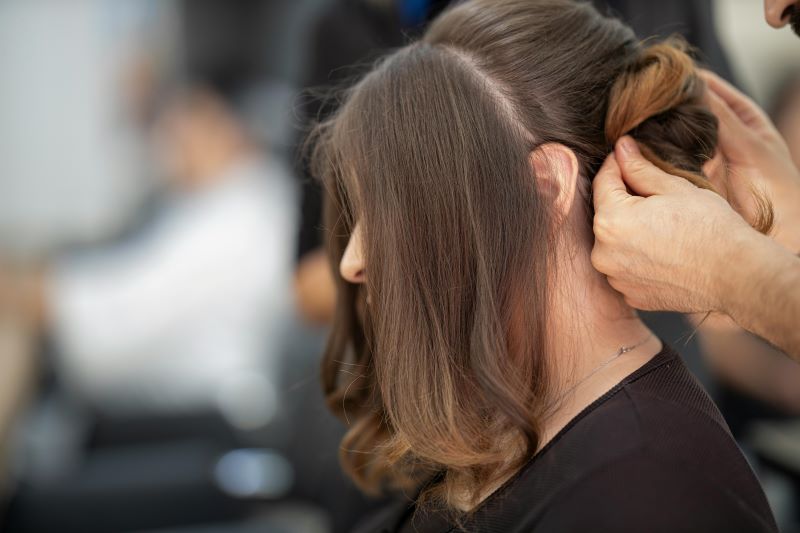Bleaching your hair can yield gorgeous results, whether you’re going platinum blonde, experimenting with daring fashion colors, or simply easing up on your natural shade.However, maintaining hair healthy after bleaching requires a bit of extra care.
The bleaching process robs your hair of moisture and natural oils, leaving it dry, fragile and prone to breakage. If you have recently bleached your hair or made plans to do so, you must learn how to sustain aftercare. In this blog, we will tell you all about how to maintain healthy hair after bleaching so that you can flaunt your new look with pride.
Why Bleached Hair Is Weaving Some Extra Care
Bleaching is the process of applying aggressive chemicals such as hydrogen peroxide or ammonia to remove the pigment from your hair strands. This chemical process lifts the cuticle of the hair and breaks down its natural melanin, leaving your hair lighter — but also weaker and more porous.
And that’s why post-bleach care is essential:
- Dullness:The hair’s natural shine fades when it is bleached.
- Breakage:Fragile strands shatter easily.
- Split Ends: Open cuticles are more prone to fraying.
- Color Fade:If you are going for color after bleaching, it fades faster with lack of hair maintenance.
Deep Condition Weekly
A weekly deep-conditioner treatment is nonnegotiable, if you have bleached hair. Which is why a good hair treatment is a must for you to use The treatments penetrate into the inner shaft to fill it with moisture and nutrients to restructure it.
What to Consider When Shopping for a Deep Conditioner:
- Moisturizing ingredients: Shea butter, coconut oil, aloe Vera, hyaluronic acid, and glycerin for intense hydration.
- Protein-packed formulas: Keratin, collagen, silk protein rebuilds broken hair bonds.
- Bond-repairing agents: Products such as Olaplex No. 3 can repair broken disulfide bonds in bleached hair.
Tip: Put on a heat cap or a warm towel while deep conditioning. Heat expands the hair cuticle and gives product better accessibility.
Skip the Heat Styling (or Apply Heat Protectant With Devotion)
Bleached hair is already delicate, and using a blow dryer, straightener or curling iron can compound the problem. Excessive heat can lead to:
- Burned strands
- Split ends
- Increased breakage
And, if you have to style with heat, be sure to always apply a heat protectant spray or serum beforehand. Seek products that offer protection up to 450°F (230°C) and include nonofos like argan oil, silicone or polymers that create a barrier on the hair shaft. Keeping your hair healthy plays an essential role in your overall beauty routine.
Alternative Styling Tip: Experiment with heat-free curling methods, such as sleeping in braids on damp hair, or integrating foam rollers.
Pick Sulfate-Free Shampoo and Conditioner
And sulfates are excellent cleansers that remove oil from your hair and scalp. This is great for hair that has not been treated, but bleached hair requires as much moisture as possible.
Try a sulfate-free shampoo and conditioner that cleanses gently without stripping oils from the hair. Bonus points if the shampoo is also color-safe, as it can help preserve any tones you’ve added after the bleach.
Ingredients to Embrace:
- Coconut-derived cleansers
- Panthenol (Pro-vitamin B5)
- Amino acids
- Oils extracted from plants (such as jojoba, avocado and argan oils)
Washing Tip: Wash only 2–3 days a week to avoid dryness.
Use Leave-in Conditioners and Hair Oils
And leave-in products and oils serve as everyday protectants against dryness and damage. After showering with shampoo and conditioner, follow up with a light leave-in product to help retain moisture. Then apply a small amount of hair oil — mid-lengths and ends only.
Best Oils for Bleached Hair:
- Argan Oil: Adds shine, repairs split ends.
- Coconut Oil:Intensive moisture and damage recovery.
- Jojoba Oil: A lightweight and non-greasy oil that mimic scalp’s natural oil.
These products shield your strands from environmental stressors, such as pollution, UV rays, and indoor heating.
Regular Trims to Remove Split Ends
As much as you can nurse your hair back to health, split ends are unavoidable, particularly after bleaching. To keep your hair healthy after bleaching, Regular trims every 6 to 8 weeks can help keep those splits from traveling up the hair shaft, where they can create even more breakage and make your hair look frizzier.
Tipping the scales when you’re trying to grow your hair long, clipping sounds counterintuitive has a byword, but it actually encourages a healthy grow by keeping proud ends.
DIY Tip: If you can’t reach a salon, try to trim only the ends at home using professional hair shears — but don’t do too much.
Protect Hair While Sleeping
You don’t think about the quality of your hair while you sleep but as you toss and turn, it can create friction that causes tangling and breakage.” This kind of damage is more common with bleached hair.
- Nighttime Hair Care: How to Protect Your Hair While Sleeping
- Silk or satin pillowcases: Prevent friction and keep hair moist.
- Loose braids or buns:Avoid tangling.
- Sleep caps or wrap:Especially useful if you have long or curly bleached hair.
Do not go to bed with wet hair either — wet hair is much more fragile and liable to break.
Consider Using Purple Shampoo (If You’re Blonde)
If you’ve bleached hair blonde, yellow or brassy tints can surface as time goes on from sun exposure, hard water or product build-up. Purple shampoo is excellent at neutralising those unflattering tones and keeping your blonde looking fresh and cool.
Apply it weekly, or as required depending on how soon brassiness develops. Just don’t be tempted to overdo it — it can dry your hair or give it a silvery tint if you leave it on too long.
Hydrate from Within
Hair health is not only about what you place on your hair — it is also about what you are putting in your body. To encourage hair strength and growth, make sure you’re:
- Drinking enough water
- Maintaining a healthy protein packed (chicken, eggs, lentils, nuts) dieta
- Hair-friendly vitamins such as Biotin, Omega-3s, Iron, and Vitamin D
- If you’re not meeting your nutritional needs through diet alone, consider taking hair supplements as well.
Do Not Bleach Too Often
And sure you can bleach blonde hair and it can be beautiful, but try to minimize how frequently you do it. Continuous bleaching will only damage hair further, leaving it hard to manage. Do root-touch-ups rather than full on bleaching sessions and give your hair a chance to recover between treatments.
If you’re finessing over a color change, consider talking to a professional stylist about whether there’s a less harsh way to achieve the results you desire.
Final Thoughts
Bleached hair requires love, patience and a proper routine. If you follow these expert tips on how to keep your hair healthy after bleaching, you’ll be able to keep going back for that color and wear those light locks with strength and shine. From deep conditioning and heat-avoidance, to using the right products and smarter sleeping, your hair can genuinely thrive post-bleach—as long as you’re good to it.






